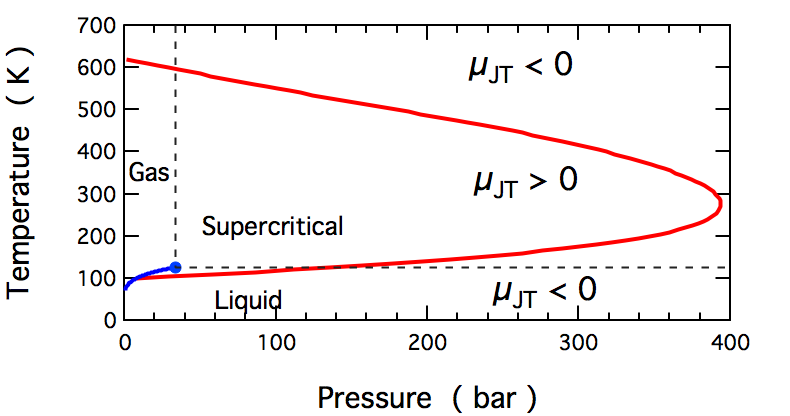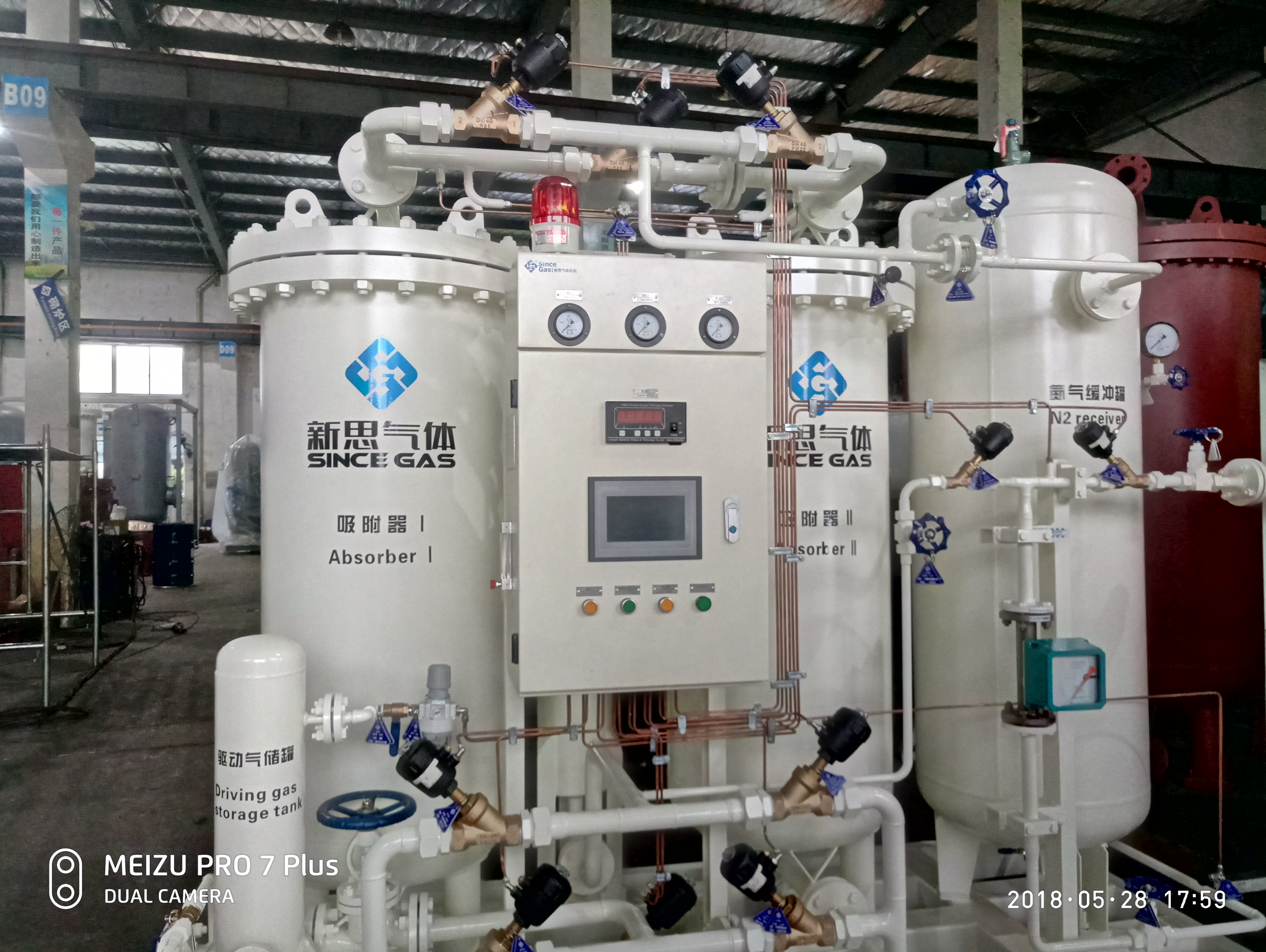|
Air Dryer
Compressed air dryers are special types of filter systems that are specifically designed to remove the water that is inherent in compressed air. The process of compressing air raises its temperature and concentrates atmospheric contaminants, primarily water vapor. Consequently, the compressed air is generally at an elevated temperature and 100% relative humidity. As the compressed air cools, water vapor condenses into the tank(s), pipes, hoses and tools that are downstream from the compressor. Water vapor is removed from compressed air to prevent condensation from occurring and to prevent moisture from interfering in sensitive industrial processes. Excessive liquid and condensing water in the air stream can be extremely damaging to equipment, tools and processes that rely on compressed air. E.g. the water can cause corrosion in the tank(s) and piping, wash out lubricating oils from pneumatic tools, emulsify with the grease used in cylinders, clump blasting media and fog painted s ... [...More Info...] [...Related Items...] OR: [Wikipedia] [Google] [Baidu] |
Hygroscopy
Hygroscopy is the phenomenon of attracting and holding water molecules via either absorption or adsorption from the surrounding environment, which is usually at normal or room temperature. If water molecules become suspended among the substance's molecules, adsorbing substances can become physically changed, e.g., changing in volume, boiling point, viscosity or some other physical characteristic or property of the substance. For example, a finely dispersed hygroscopic powder, such as a salt, may become clumpy over time due to collection of moisture from the surrounding environment. ''Deliquescent'' materials are sufficiently hygroscopic that they absorb so much water that they become liquid and form an aqueous solution. Etymology and pronunciation The word ''hygroscopy'' () uses combining forms of '' hygro-'' and '' -scopy''. Unlike any other ''-scopy'' word, it no longer refers to a viewing or imaging mode. It did begin that way, with the word ''hygroscope'' referring in the ... [...More Info...] [...Related Items...] OR: [Wikipedia] [Google] [Baidu] |
Joule–Thomson Effect
In thermodynamics, the Joule–Thomson effect (also known as the Joule–Kelvin effect or Kelvin–Joule effect) describes the temperature change of a ''real'' gas or liquid (as differentiated from an ideal gas) when it is forced through a valve or porous plug while keeping it insulated so that no heat is exchanged with the environment. This procedure is called a ''throttling process'' or ''Joule–Thomson process''. At room temperature, all gases except hydrogen, helium, and neon cool upon expansion by the Joule–Thomson process when being throttled through an orifice; these three gases experience the same effect but only at lower temperatures. Most liquids such as hydraulic oils will be warmed by the Joule–Thomson throttling process. The gas-cooling throttling process is commonly exploited in refrigeration processes such as liquefiers in air separation industrial process. In hydraulics, the warming effect from Joule–Thomson throttling can be used to find internall ... [...More Info...] [...Related Items...] OR: [Wikipedia] [Google] [Baidu] |
Gases
Gas is one of the four fundamental states of matter (the others being solid, liquid, and plasma). A pure gas may be made up of individual atoms (e.g. a noble gas like neon), elemental molecules made from one type of atom (e.g. oxygen), or compound molecules made from a variety of atoms (e.g. carbon dioxide). A gas mixture, such as air, contains a variety of pure gases. What distinguishes a gas from liquids and solids is the vast separation of the individual gas particles. This separation usually makes a colourless gas invisible to the human observer. The gaseous state of matter occurs between the liquid and plasma states, the latter of which provides the upper temperature boundary for gases. Bounding the lower end of the temperature scale lie degenerative quantum gases which are gaining increasing attention. High-density atomic gases super-cooled to very low temperatures are classified by their statistical behavior as either Bose gases or Fermi gases. For a comprehensive ... [...More Info...] [...Related Items...] OR: [Wikipedia] [Google] [Baidu] |
Nitrogen Membrane
Nitrogen generators and stations are stationary or mobile air-to-nitrogen production complexes. Adsorption technology Adsorption concept The adsorption gas separation process in nitrogen generators is based on the phenomenon of fixing various gas mixture components by a solid substance called an adsorbent. This phenomenon is brought about by the gas and adsorbent molecules' interaction. Pressure swing adsorption technology The technology of air-to-nitrogen production with the use of adsorption processes in nitrogen generators is well studied and widely applied at industrial facilities for the recovery of high-purity nitrogen. The operating principle of a nitrogen generator utilizing the adsorption technology is based upon the dependence of the adsorption rates featured by various gas mixture components upon pressure and temperature factors. Among nitrogen adsorption plants of various types, pressure swing adsorption (PSA) plants have found the broadest application world ... [...More Info...] [...Related Items...] OR: [Wikipedia] [Google] [Baidu] |
Desiccant
A desiccant is a hygroscopic substance that is used to induce or sustain a state of dryness (desiccation) in its vicinity; it is the opposite of a humectant. Commonly encountered pre-packaged desiccants are solids that absorb water. Desiccants for specialized purposes may be in forms other than solid, and may work through other principles, such as chemical bonding of water molecules. They are commonly encountered in foods to retain crispness. Industrially, desiccants are widely used to control the level of water in gas streams. Types of desiccants Although some desiccants are chemically inert, others are extremely reactive and require specialized handling techniques. The most common desiccant is silica gel, an otherwise inert, nontoxic, water-insoluble white solid. Tens of thousands of tons are produced annually for this purpose. Other common desiccants include activated charcoal, calcium sulfate, calcium chloride, and molecular sieves (typically, zeolites). Desiccan ... [...More Info...] [...Related Items...] OR: [Wikipedia] [Google] [Baidu] |
Silica Gel
Silica gel is an amorphous and porous form of silicon dioxide (silica), consisting of an irregular tridimensional framework of alternating silicon and oxygen atoms with nanometer-scale voids and pores. The voids may contain water or some other liquids, or may be filled by gas or vacuum. In the last case, the material is properly called silica xerogel. Silica xerogel with an average pore size of 2.4 nanometers has a strong affinity for water molecules and is widely used as a desiccant. It is hard and translucent, but considerably softer than massive silica glass or quartz; and remains hard when saturated with water. Silica xerogel is usually commercialized as coarse granules or beads, a few millimeters in diameter. Some grains may contain small amounts of indicator substance that changes color when they have absorbed some water. Small paper envelopes containing silica xerogel pellets, usually with a "do not eat" warning, are often included in dry food packages to absorb any h ... [...More Info...] [...Related Items...] OR: [Wikipedia] [Google] [Baidu] |
AlliedSignal
AlliedSignal was an American aerospace, automotive and engineering company created through the 1985 merger of Allied Corp. and Signal Companies. It subsequently purchased Honeywell for $14.8 billion in 1999, and thereafter adopted the Honeywell name and identity. AlliedSignal was a member of the Dow Jones Industrial Average from 1985 until February 19, 2008. History The Allied Chemical & Dye Corporation originated with the 1920 merger of five chemical companies: Barrett Paving Materials (est. 1852), General Chemical Company (est. 1899), National Aniline & Chemical Company (est. 1917), Semet-Solvay Company (est. 1895), and the Solvay Process Company (est. 1881). The consolidation occurred with the backing of chemist William Nichols, who became concerned about dependence on the German chemical industry during World War I, and financier Eugene Meyer. It acquired the Eltra Corporation in 1979. The company renamed itself the Allied Chemical Corporation in 1958, then simply the A ... [...More Info...] [...Related Items...] OR: [Wikipedia] [Google] [Baidu] |
Digester Gas
Biogas is a mixture of gases, primarily consisting of methane, carbon dioxide and hydrogen sulphide, produced from raw materials such as agricultural waste, manure, municipal waste, plant material, sewage, green waste and food waste. It is a renewable energy source. Biogas is produced by anaerobic digestion with anaerobic organisms or methanogen inside an anaerobic digester, biodigester or a bioreactor. Biogas is primarily methane () and carbon dioxide () and may have small amounts of hydrogen sulfide (), moisture and siloxanes. The gases methane, hydrogen, and carbon monoxide () can be combusted or oxidized with oxygen. This energy release allows biogas to be used as a fuel; it can be used in fuel cells and for any heating purpose, such as cooking. It can also be used in a gas engine to convert the energy in the gas into electricity and heat. Biogas can be compressed after removal of carbon dioxide and hydrogen sulphide, the same way as natural gas is compressed to CNG, ... [...More Info...] [...Related Items...] OR: [Wikipedia] [Google] [Baidu] |
Landfill Gas
Landfill gas is a mix of different gases created by the action of microorganisms within a landfill as they decompose organic waste, including for example, food waste and paper waste. Landfill gas is approximately forty to sixty percent methane, with the remainder being mostly carbon dioxide. Trace amounts of other volatile organic compounds (VOCs) comprise the remainder (<1%). These trace gases include a large array of species, mainly simple s.Hans-Jürgen Ehrig, Hans-Joachim Schneider and Volkmar Gossow "Waste, 7. Deposition" in Ullmann's Encyclopedia of Industrial Chemistry, 2011, Wiley-VCH, Weinheim. Landfill gases have an influence on . The major components are [...More Info...] [...Related Items...] OR: [Wikipedia] [Google] [Baidu] |








